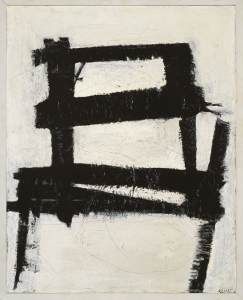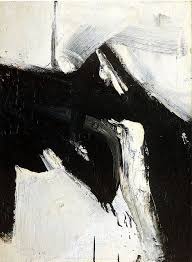Contextual study point 3 – Franz Kline
https://www.theartstory.org/artist-kline-franz-life-and-legacy.htm
Franz Kline – 1910 to 1962, was an American abstract expressionist who was born in a small coal mining town community in Pensilvania, where there was no much offer for artists. Franz had a very tough childhood as his father committed suicide when he was only seven years old. His mother remarried and sent him to an institution which he referred as “orphanage”. Growing up Franz was determined to make it as an artist his own ways. He started as a cartoonist for his high school newspapers and went to Boston University’s school of Art . After finishing it he went to spend one year in London- England, where he met his wife and in 1938 returned to New York with her. Unfortunately she had a mental breakdown soon after and spent time in mental institutions. In New York he started painting murals in bars and selling his illustrations to magazines in his “Rembrandt” days style. In 1943 he met Willen de Kooning, Jack Pollock and Philip Guston, all of them abstract expressionists. In part Franz was inspired by Kooning black and white paintings of 1946-49. By then he had abandoned figurative images and had already began to explore black and white expressionism in ink on paper. There are rumours that Kooning was the one who inspired Franz to start painting in large scale using an enlarger. The result was “a four by five inch black drawing of a rocking chair”. In 1950 Franz Kline had his first exhibition at the Charles Egan Gallery in New York.
Critics have long debated of Franz Kline style of black and white painting and Japanese calligraphy .The suggestion first surfaced on his breakthrough in 1950. He denied and affirmed that his inspiration comes from unconscious sources.
I agree that at first look, Franz Kline artwork reminded me of Japanese calligraphy as well but for only a few seconds. His strokes exude confidence, they are strong and form images. Japanese calligraphy for instance, the strokes are delicate and carefully planned to occupy only certain areas on the paper leaving white spaces untouched. It is a very soft way of using brush. Franz Kline paintings looks as if it is bleeding out of the paper. His overlapping style also shows that nothing was done in just a few brush strokes. It the use of layer after layer, carving the image he wanted to stand out.It has a rigid structure and yet very spontaneous. I like how many of them are very architectural and some with so much perspective and depth even though it is only in black and white colours. I think his artwork is so imposing and confident. There are loads of different directions and movement like an orchestra of brush strokes. It is very difficult to replicate his artwork even by using it only as a reference. He had the ability to make such an strong statement through his paintings and I think that is why he standed out for Abstract Expressionism at the time.

The Chair – 1950 has a lot of Franz Kline technique in it. It is possible to see even only on computer screen the texture on the canvas. The white, no so white. The layer going over the chair legs, and some of greyish on the outlines of the black. It is simple but charming. Such nice piece to just stand in front of it and wonder how can it be done!?

I couldn’t find any information on this painting but I really like it! It has so much movement and the way the brush dragged some colour off the main painting around the top and in the middle added a sort of dimension to it. Although the background is white , there are whiter areas which shows like a light. It is an interesting construction that I cannot figure out what it is but that is exactly what grabs the attention. I look near and far, squint my eyes and it amuses me as an observer.

Again, this is another painting that to me has so much perspective in it. It makes me feel I am looking at it from the top. The splashes of black decreases giving the sense of going further away. Is it some sort of explosion? It is all so intriguing…. I think Franz Kline has mastered the magic in Abstract Expressionism. It is abstract, very expressive but it also has that factor to make the observer keep wondering what is exactly that he saw, or imagine in order to create a piece like that. I like how it occupies the space in the canvas. Ho the amount of splashes are so balanced between both sides. This particular paint differs from the other two above. It has a momentum since splashes like that are not possible to keep overlaying. In my opinion it feels a bit more spontaneous and unexpected than the other two .
